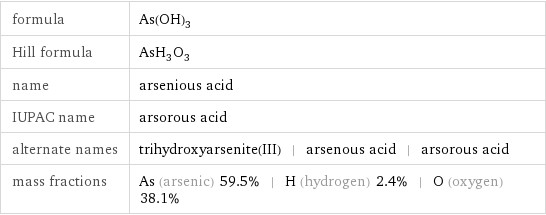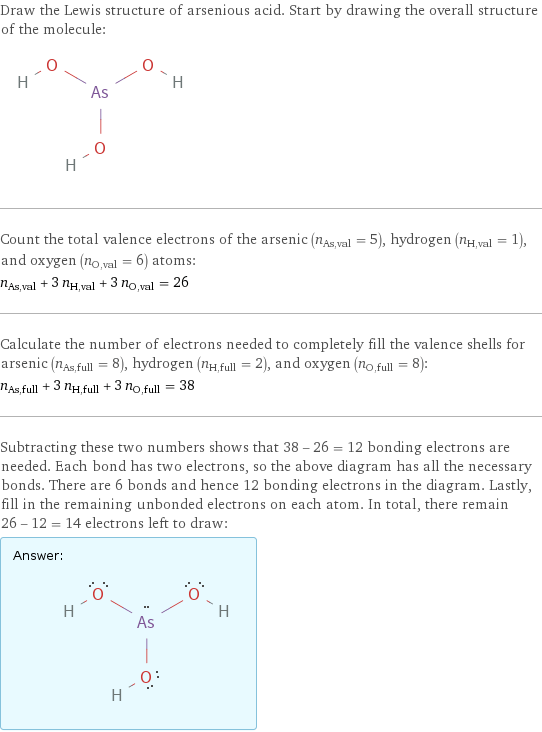Input interpretation

arsenious acid
Chemical names and formulas

formula | As(OH)_3 Hill formula | AsH_3O_3 name | arsenious acid IUPAC name | arsorous acid alternate names | trihydroxyarsenite(III) | arsenous acid | arsorous acid mass fractions | As (arsenic) 59.5% | H (hydrogen) 2.4% | O (oxygen) 38.1%
Lewis structure

Draw the Lewis structure of arsenious acid. Start by drawing the overall structure of the molecule: Count the total valence electrons of the arsenic (n_As, val = 5), hydrogen (n_H, val = 1), and oxygen (n_O, val = 6) atoms: n_As, val + 3 n_H, val + 3 n_O, val = 26 Calculate the number of electrons needed to completely fill the valence shells for arsenic (n_As, full = 8), hydrogen (n_H, full = 2), and oxygen (n_O, full = 8): n_As, full + 3 n_H, full + 3 n_O, full = 38 Subtracting these two numbers shows that 38 - 26 = 12 bonding electrons are needed. Each bond has two electrons, so the above diagram has all the necessary bonds. There are 6 bonds and hence 12 bonding electrons in the diagram. Lastly, fill in the remaining unbonded electrons on each atom. In total, there remain 26 - 12 = 14 electrons left to draw: Answer: | |
Basic properties

molar mass | 125.94 g/mol phase | solid (at STP)
Units

Basic drug properties

approval status | experimental | small molecule
Chemical identifiers
O InChI identifier | InChI=1/AsH3O3/c2-1(3)4/h2-4H InChI key | GCPXMJHSNVMWNM-UHFFFAOYAA](../image_source/92f32b502ee83c43cb544c5c87629d50.png)
PubChem CID number | 545 PubChem SID number | 7890683 SMILES identifier | O[As](O)O InChI identifier | InChI=1/AsH3O3/c2-1(3)4/h2-4H InChI key | GCPXMJHSNVMWNM-UHFFFAOYAA